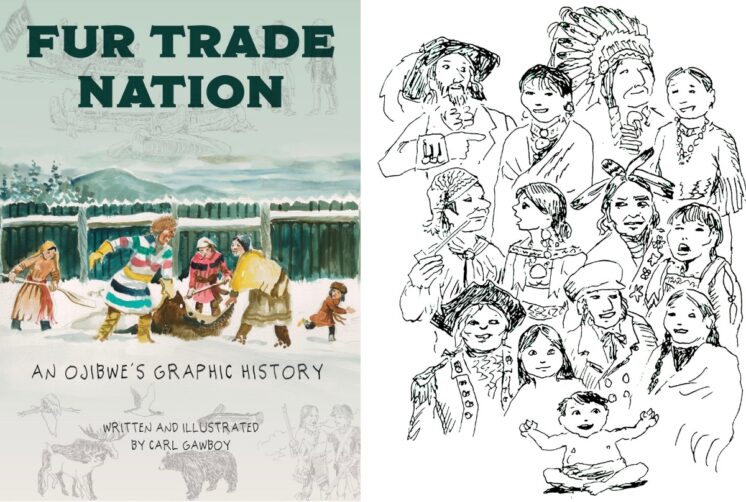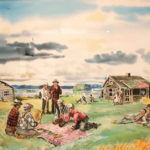Fur Trade Nation: Linking Continents
One of Carl Gawboy’s earliest memories is seeing a muskrat skin hanging on the wall in his house. “My father trapped animals and sold them to a fur buyer,” Gawboy said. “That’s when my fascination with trapping began.” Decades later, that interest became the subject of Gawboy’s latest book, Fur Trade Nation: An Ojibwe’s Graphic History, published by Animikii Mazina’iganan: Thunderbird Press. The release date is April 30.
“Growing up in Ely, just about every boy wanted to be a trapper and have a trap line,” he said. As Gawboy went off to college and later became a faculty member at the College of St. Scholastica and University of Minnesota Duluth, he brought his fascination with that history to classes he taught about the Minnesota fur trade.
Gawboy, a nationally recognized artist and enrolled member of the Bois Forte Band of Chippewa, emphasizes Minnesota’s long history of fur trading. He recalls Daniel Greysolon Sieur du Lhut’s voyage to Minnesota in the 1670s. “Sieur du Luth followed the fur trade route,” Gawboy said.
Now, tracing a map for the original routes beneath today’s paved roads and the junctions linking rivers and lakes, Gawboy points out the trade routes and the connections between people. “Greysolon, along with other fur traders, brought something else. The Dakota and Aanishinabe people, the Scots, the French, and the English all spoke the same language. Everyone could speak French: men, women, and children,” Gawboy said.
Fur Trade Nation shares the history of trade goods; in particular, trade goods for items of interest to women. European fashion called for more than beaver pelts for beaver hats. Animal fur had many uses. “Think about ermine collars and fur coats,” Gawboy said. The trading went both ways. Cloth and beads came from Europe. “It was a woman’s domain,” he said. “The number one trade item by weight was woven cloth.”
Gawboy’s story is illustrated with more than 800 of his pen and ink drawings. Tim Cochrane, former superintendent of the Grand Portage National Monument, and a recent Minnesota Book Award-winning historian, said there isn’t anything like it in fur-trade literature. “It is a one-of-a-kind book,” he said.
Fur Trade Nation is the inaugural publication of Animikii Mazina’iganan: Thunderbird Press, which is run through Fond du Lac Tribal and Community College. A book release event will be held at the college at 5 p.m. on Tuesday, April 30.
Recommended Links:
Leave a Comment
Only registered members can post a comment , Login / Register Here















No Comments